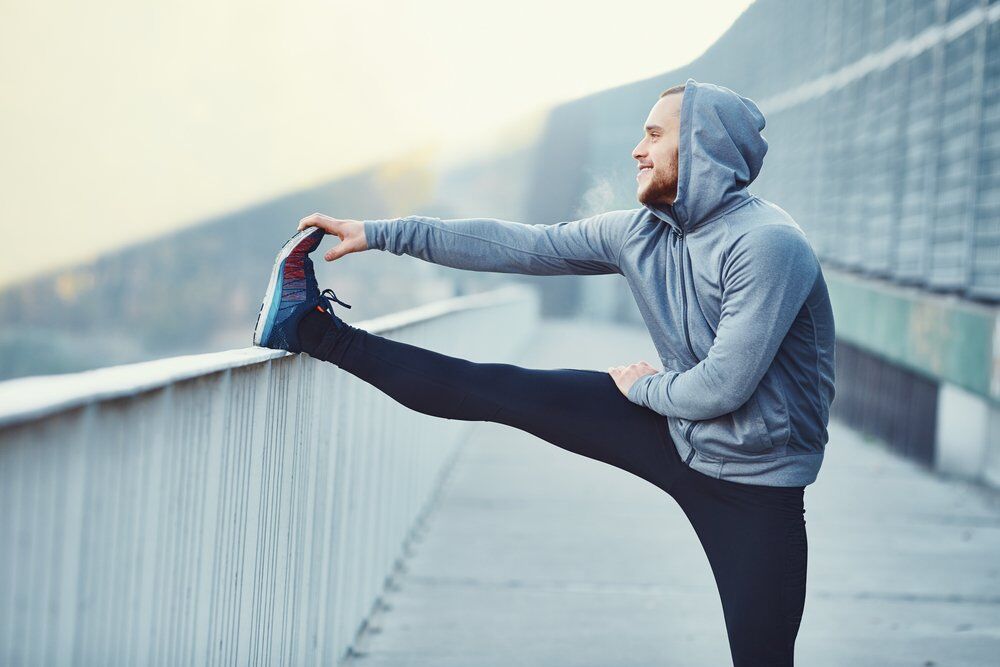With things beginning to open up and sport coming back onto the TV, more and more people are turning their thoughts to their return to the pitch. Which means, now, after nearly 5 months of sitting on the sidelines it’s time to get match fit again.
However, with current restrictions still in place for the time being it’s not possible to train with your team, which means you need to find a way to get into shape without the support of your teammates.
Thankfully, you’re not the only one going through it. Here at TPW, we too love our team sports and have put together the exact drills you need to do to get yourself back into shape in time for the new season.
Consider this your pre-season training.
What is Sport Specific Training?
Sport-specific training is any fitness drill designed specifically to increase your athletic performance. The best way to do this is, of course, practice your sport of choice, however, as we all know this is not currently possible.
So, instead, we’ll be looking at simple ways you can build up the required fitness for different aspects of your favourite sport solo.
Before we start, don’t forget that when coming back to working out after some time off it’s important you don’t throw yourself into the deep end. Instead, aim to build up the intensity of your workouts over several weeks.
Allow proper rest between your workouts and make sure you’re eating appropriately for your goal as this will give you the fuel you need to perform at your best.
1: Conditioning
Every sport has a unique energy requirement. Some require short, sharp bursts of energy, others require a longer sustained output and others still are a mix.
For example, football involves near-continuous play for two 45-minute halves which means you need to have a fantastic level of base endurance as well as the ability to sprint short distances throughout a match.
5-a-side football, on the other hand, is two 20-minute halves played at a much faster pace. This means whilst you still need some endurance you will spending much more time sprinting and subbing on and off.
To get fit for purpose try incorporating a couple of 30 – 60-minute runs and 1-2 sprints sessions consisting of 6-10x sprints into your weekly training plan.
2: Explosive Power
Another important aspect of most sports are the abilities to change direction quickly, jump high and accelerate away from a dead stop.
Being able to do this comes down to having explosive power, which means if you’re want to go from slow to fast in 0 seconds flat and leave your opponent in the dust, then you need to work on it.
One of the best ways to do this is to incorporate plyometric movements into your training plan. Plyometric movements are exercises where you exert maximum force over a short period.
Common examples are clap press-ups, squat jumps, burpees, squat thrusts and box jumps. For example, if you need to be able to jump higher you can do 3 – 4 sets of 10 box jumps a handful of times a week.
3: Strength
Whether it’s holding off a defender, holding onto the ball or stopping your opponent from advancing, strength and the ability to hold your ground is vital for many team sports.
To build up a good level of whole-body strength you want to spend sometime weightlifting. In particular, performing big compound movements like the squats, deadlifts, rows and presses.
Training these movements 3 times a week with a focus on getting stronger over time will allow you to build a great foundation of strength whilst also helping to injury-proof your joints.
4: Stability
Balance is an important part of many sports. It gives you the ability to get into positions others wouldn’t as you stay on your feet under the pressure of your opponent.
Improving your core stability is the best way to create fantastic balance and help you maintain your ground no matter what’s thrown your way.
To build up yours you want to introduce plank holds to the end of your workout.
Summing Up
With the prospect of team sports on the horizon, there’s no better time get yourself back into shape. By working on your conditioning, power, strength and stability you can ensure you’re ready to go when the whistle blows.

No Comments yet!